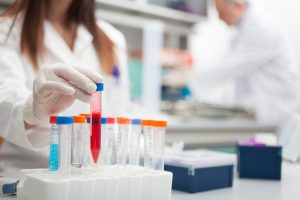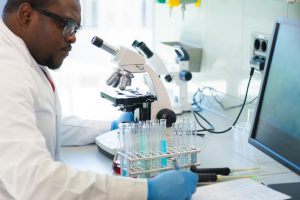Khloé Kardashian’s Skin Cancer Scare and What You Need to Know
While celebrities are often at the forefront of entertainment news for their glamorous lifestyles, Khloé Kardashian recently made headlines when she revealed a skin cancer scare which caused her to remove a tumour from her cheek. The popular American television personality shared the news in an upcoming episode of her reality show ‘The Kardashians’.
This follows from an earlier experience where she had a potentially cancerous mole removed from her back. The removal of the melanomas served as a wake-up call for the reality star, who has since become an advocate for skin cancer awareness and prevention. The importance of which she shares on her social media platforms.
The incident highlights the importance of understanding the risks that are associated with skin cancer and how to take the steps to protect yourself. In Singapore, skin cancer is on the rise, with more cases being reported each year. It is important to take Khloé’s story as a cautionary tale and to prioritise skin health by taking the necessary precautions to protect yourself from the sun, and performing regular skin self-exams.
Understanding Skin Cancer
Skin cancer is the most common type of cancer worldwide, with many millions of people being diagnosed each year. It is due to an abnormal growth of skin cells, and occurs as a result of repeated exposure to ultraviolet (UV) radiations from the sun. The cancerous cells also have the ability to spread to other parts of the body. Skin cancer can be classified into three main types:
- Basal cell carcinoma: These may appear as a pearly or waxy bump. They may be skin coloured or form scar-like lesions. Recurring sores that appear on the skin.
- Squamous cell carcinoma: These may appear as a firm, red nodule. They may also be flat lesions with a scaly appearance.
- Cutaneous melanoma: They may appear as a new mole or changes in appearance to an existing mole. They may also be large brown spots on the palms, fingertips, toes, or soles of the feet amongst other regions.
The former two are the more common forms of skin cancer and can typically be treatable if detected early. Cutaneous melanoma, on the other hand, is less common but more dangerous, as it can spread to various other parts of the body.
Signs and Symptoms
- Sores or ulcers that do not heal
- A growing lump on the skin
- Persistent itchy red patches on the skin or enlarging pigmentation on the skin
- Changes in the colour, shape, size, or speed of growth new, or previously existing, freckle or mole
Risk Factors for Skin Cancer
There are several factors that can increase your risk of developing skin cancer. These include:
- Excessive exposure to sunlight, particularly during peak UV radiation hours between 10am to 4pm
- Repeated use of tanning beds which emit high levels of UV radiation
- Fair skin, freckles, and light-coloured eyes, which are more susceptible to UV radiation damage
- Genetic predisposition
- Family or personal history of skin cancer
- Older age
- Individuals with weak immune systems
Preventing Skin Cancer
While avoiding exposure to UV radiation may not be possible, the following as some ways to reduce your risk of developing skin cancer:
- Limit your exposure to the sun during peak hours
- Wear protective clothing, such as long-sleeved shirts and hats
- Use protective equipment such as umbrellas
- Use sunscreen with at least SPF 30 and consistently reapply throughout the day. This is recommended year round, in all climates, and both indoors and outdoors
- Avoid tanning beds
- Perform regular skin self-exams and seek medical attention if you notice any changes in your skin
By understanding the risks associated with skin cancer and taking the necessary precautionary steps, you can reduce your risk of developing this potentially deadly disease. Consult your healthcare provider immediately if you have any concerns or doubts.












